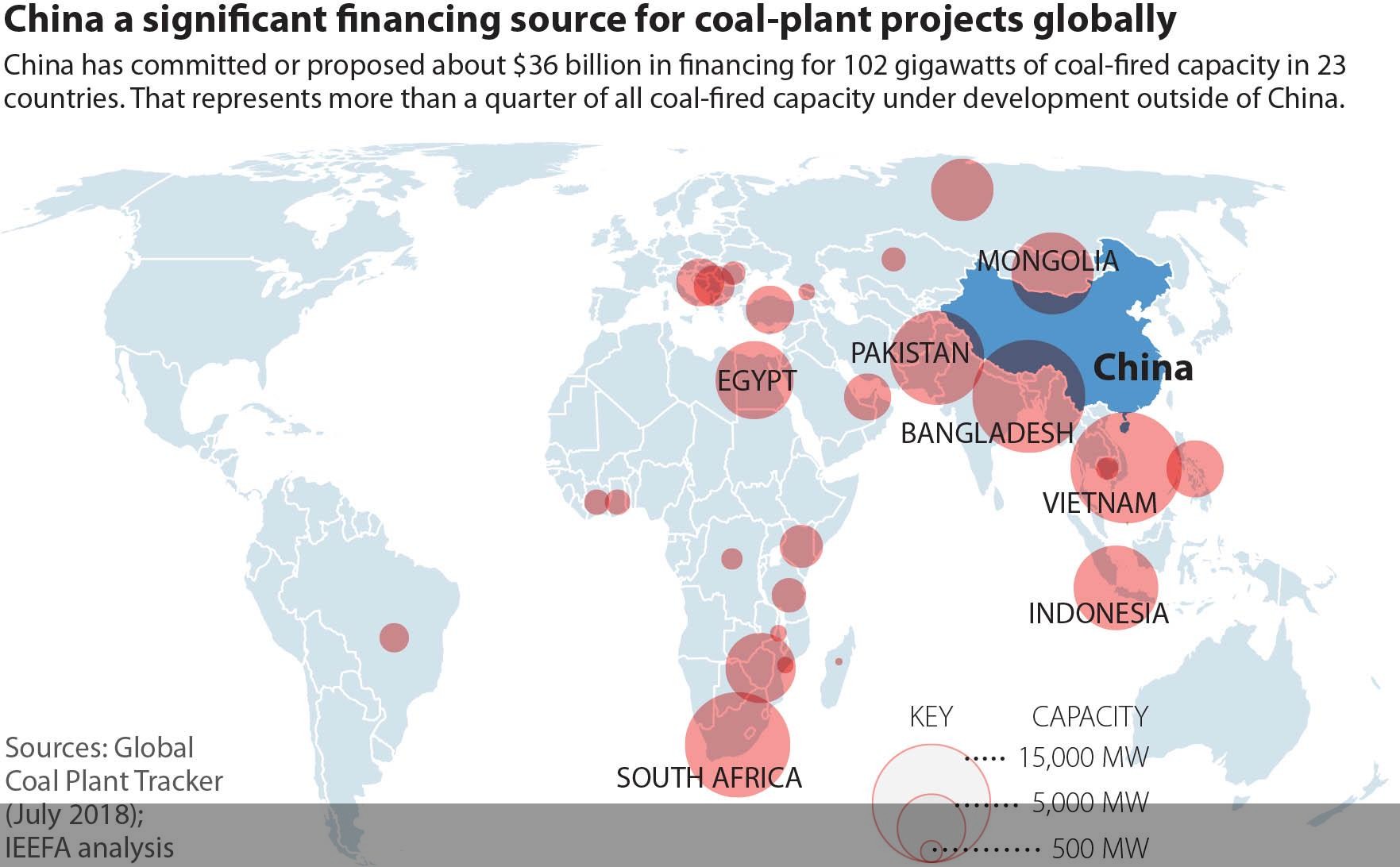Chinese Funding for Coal Power Plants Outside China Map


David Chen
Data Visualization Specialist
David Chen is an expert in transforming complex geographic datasets into compelling visual narratives. He combines his background in computer science ...
Geographic Analysis
What This Map Shows
The map titled "Where Chinese funding for coal power plants outside China is going" provides a striking overview of the global reach of Chinese investment in coal energy. It highlights the countries and regions benefiting from this financial influx, showcasing the locations of coal power plants that are either in operation, under construction, or planned, funded by Chinese entities. This visualization underscores the significant role that China plays in the global energy landscape, particularly in the context of fossil fuels.
As we delve deeper, it’s crucial to understand the implications of this funding on both the energy sector and the environment across various regions. The map not only serves as a geographical reference but also as a visual representation of the ongoing reliance on coal, despite the broader global trend towards renewable energy sources.
Deep Dive into Chinese Coal Investments
Chinese investments in coal power outside its borders are driven by a variety of factors, including economic interests, energy security, and international influence. As the world's largest consumer of coal, China has historically relied on domestic production to meet its energy demands. However, as domestic resources dwindle and environmental regulations tighten, the Chinese government has sought to secure energy resources internationally.
Interestingly, these investments are often framed within the Belt and Road Initiative (BRI), which aims to enhance global trade routes and bolster economic ties across Asia, Europe, and beyond. Through this initiative, China has financed numerous coal projects in countries such as Pakistan, Indonesia, and Vietnam, seeking to expand its energy footprint while also exporting its technology and expertise.
Notably, coal remains a contentious energy source due to its environmental impact. According to the Global Coal Plant Tracker, as of 2023, there are hundreds of coal projects globally backed by Chinese funding. Countries like Pakistan have seen significant Chinese investment in energy infrastructure, with projects like the China-Pakistan Economic Corridor (CPEC) facilitating the construction of multiple coal-fired power plants.
In addition to economic benefits, these investments often come with geopolitical implications. They can strengthen bilateral relations, but may also lead to increased debt dependency for the recipient countries. For instance, Sri Lanka’s Hambantota Port project, initially funded by China, has raised concerns about sovereignty and long-term economic viability, echoing similar issues in multiple countries receiving Chinese investments in coal.
Regional Analysis
Looking at the map, we can identify several key regions that stand out in terms of Chinese coal investment.
1. **South Asia**: This region, particularly Pakistan and Bangladesh, has emerged as a focal point for Chinese coal funding. Pakistan's reliance on coal has surged, with projects like the Thar Coal Project aiming to address energy shortages, albeit at the cost of increased carbon emissions. Interestingly, this has sparked domestic protests and environmental concerns among local communities.
2. **Southeast Asia**: Countries such as Indonesia and Vietnam are also significant recipients of Chinese coal investments. Indonesia, rich in coal reserves, has seen an influx of Chinese capital, with several coal power plants planned or under construction. However, as Vietnam grapples with energy demands, the government is facing a dual challenge: ensuring energy security while pursuing commitments to reduce greenhouse gas emissions.
3. **Africa**: The African continent, particularly nations like Zimbabwe and South Africa, has witnessed Chinese-funded coal projects as part of broader development initiatives. Here, the conversation often revolves around balancing economic growth with sustainability, as many countries are rich in natural resources but face environmental degradation.
These examples illustrate that while Chinese investments in coal power can drive economic growth, they also raise critical questions about environmental sustainability and energy policy in the recipient countries.
Significance and Impact
The implications of Chinese funding for coal power plants extend far beyond mere economic transactions. This trend highlights a global challenge: how to transition from fossil fuels to renewable energy sources while addressing immediate energy needs. The reliance on coal, particularly in developing nations, raises pressing concerns about climate change, air quality, and public health.
Moreover, the map serves as a reminder of the geopolitical landscape surrounding energy investments. As countries navigate energy security and climate commitments, Chinese funding continues to play a pivotal role in shaping the energy infrastructure of nations around the world.
Looking ahead, the global energy landscape may shift dramatically as countries strive to meet their climate goals, potentially leading to a decline in coal investments. Nevertheless, the current trajectory suggests that, for many nations, the allure of immediate economic benefits from coal is likely to persist in the short term, complicating the path toward a sustainable energy future.
Ultimately, understanding the geographical implications of Chinese coal investments is vital for policymakers, activists, and the global community as we work together to forge a sustainable energy pathway for the future.
Visualization Details
- Published
- August 5, 2025
- Views
- 158
Comments
Loading comments...